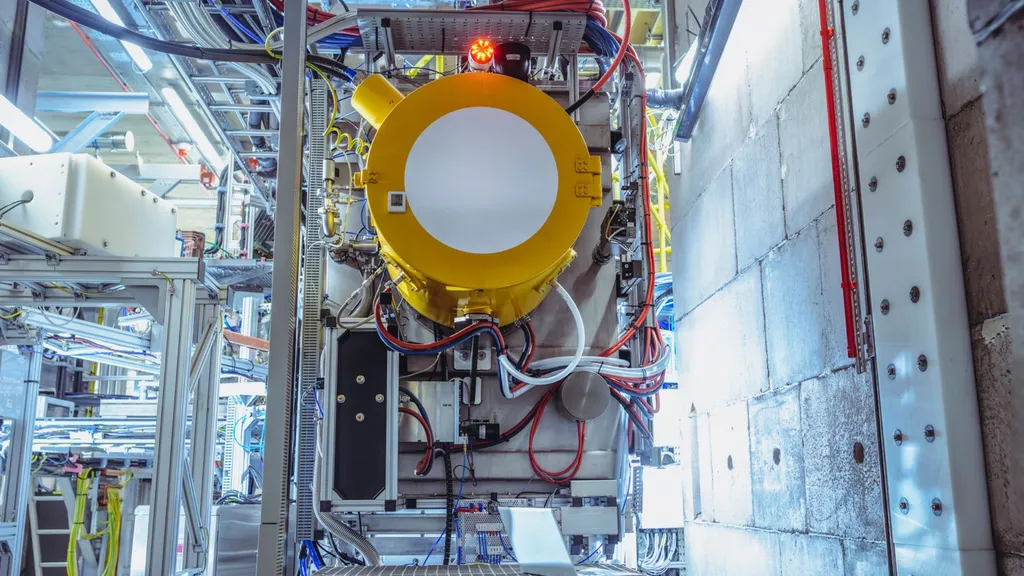In the relentless pursuit of clean, sustainable energy, scientists are continually pushing the boundaries of fusion technology. A recent study published in the journal *Nuclear Fusion* (translated from the original title) has shed new light on a critical phenomenon that could significantly impact the future of tokamak-based fusion reactors. The research, led by Peng Shi of the Institute of Plasma Physics at the Chinese Academy of Sciences, delves into the intricate dance of turbulence and transport at the edge of tokamak plasmas, offering insights that could shape the next generation of fusion energy systems.
The study focuses on the sequence of events leading to density limit disruption in the J-TEXT tokamak, a critical issue that can halt fusion reactions and damage reactor components. Using advanced diagnostics, including Langmuir probes and a polarimeter-interferometer system, Shi and his team uncovered a consistent pattern as plasma density increases. “We observed the collapse of the sheared radial electric field, followed by an enhancement of boundary quasi-coherent turbulence and a subsequent increase in particle transport,” Shi explained. This turbulent transport leads to edge cooling and the formation of a high-field-side high-density (HFSHD) front, a phenomenon that had not been previously linked to edge turbulence.
One of the most significant findings of the study is the inverse proportionality between the density thresholds for these phenomena and the edge safety factor (q_a). This relationship suggests that the edge safety factor plays a crucial role in determining the stability of tokamak plasmas. “By understanding these mechanisms, we can better predict and mitigate density limit disruptions, which is essential for the commercial viability of fusion energy,” Shi noted.
The implications of this research are far-reaching for the energy sector. Fusion energy, with its promise of abundant, clean power, is a key area of focus for many energy companies and governments worldwide. However, the commercialization of fusion technology faces significant challenges, including the need to maintain stable, high-density plasmas for extended periods. The insights gained from this study could help engineers design more robust and efficient tokamak reactors, bringing us one step closer to realizing the dream of fusion energy.
Moreover, the study’s findings could have a profound impact on the development of materials and technologies for fusion reactors. By understanding the role of edge turbulence in triggering density limit disruptions, researchers can develop better strategies for protecting reactor walls and components from damage. This could lead to longer-lasting, more efficient reactors, reducing the overall cost of fusion energy.
As the world grapples with the challenges of climate change and energy security, the pursuit of clean, sustainable energy sources has never been more urgent. The research led by Peng Shi and his team offers a glimpse into the complex world of plasma physics, highlighting the critical role of turbulence and transport in the quest for fusion energy. With each new discovery, we move closer to a future powered by clean, abundant energy, transforming the energy sector and securing a sustainable future for generations to come.

